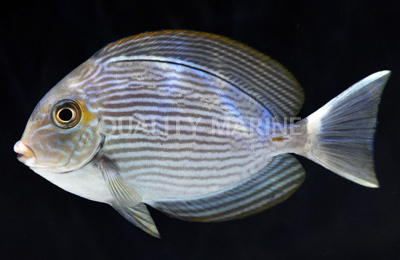A Quick & Painless Guide To Identifying Those Confusing Species Of Large Acanthurus
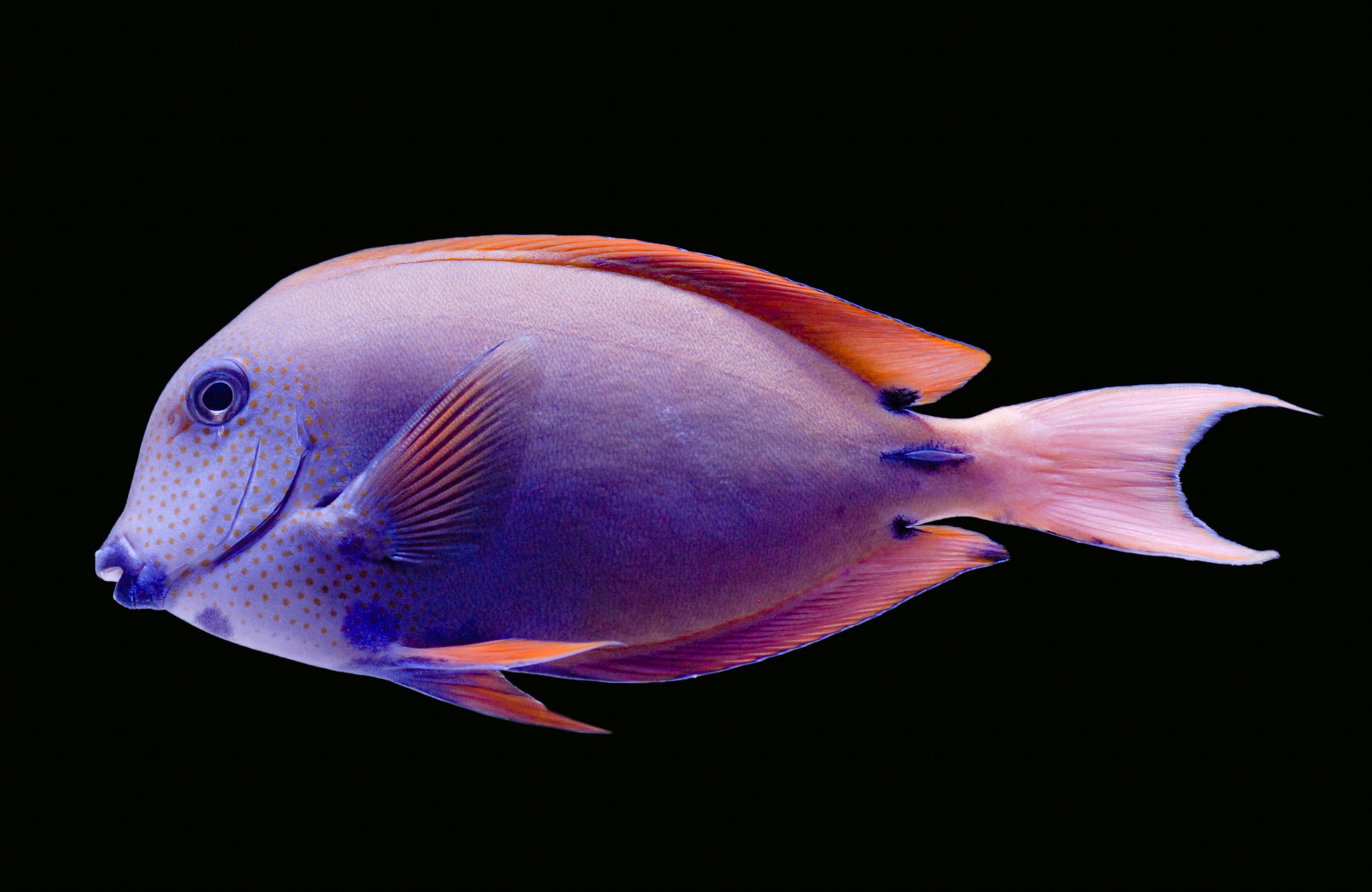
There are somewhere around 40 species of Acanthurus surgeonfishes spread across the worlds tropical marine waters, plus another 9 species that go by the name Ctenochaetus. Together, these comprise the most diverse evolutionary lineage in the surgeonfish family.
Ecologically, these are a varied lot. For instance, there are several lineages that became specialized on a zooplanktivorous diet of salps and jellies (e.d. A. thompsoni, A. nubilus). Others, like A. lineatus and A. achilles, are territorial grazers on filamentous algae. Some have become adapted to feeding in the turbulent waters of surge channels (e.g. A. guttatus, A. leucopareius). And then there are the more generalist grazers, fishes like A. triostegus and A. leucosternon, which often form large shoals to overwhelm other aggressive herbivores.
Together, these lineages represent only around one-third of this groups species-level diversity. The remaining taxa fall into a couple of categories. There are the Ctenochaetus tangs, often referred to as bristletooths, which use specialized teeth to rake silty detritus and microorganisms out from filamentous algae. And then there are the Acanthurus surgeonfishes that feed upon a similar diet, ingesting large quantities of sand, organic matter, benthic algae, and random invertebrates. To accommodate this diet, these species have developed a thin-walled stomach (versus the thickened, gizzard-like stomach of herbivorous species) and a much shorter intestinal tract.
The detritivorous Acanthurus are generally large-bodied and can be confusingly similar in appearance. So lets take a moment to identify some of the more commonly encountered examples from this group.
Orange-shoulder and Lieutenant Tangs (A. olivaceus & A. tennentii)
Most of the Acanthurus well be looking at have a series of fine striations or spots along the body, but not so with these geminate sister species. The Indian Ocean A. tennentii is a grey fish with two black dashed behind the eye, while the Pacific A. olivaceus is two-toned and often greener (i.e. olivaceus), with a bright orange streak behind its eye. Juveniles are grey and yellow, respectively, and adults of these never show the white caudal band that well see in many of the fishes elsewhere in this lineage.
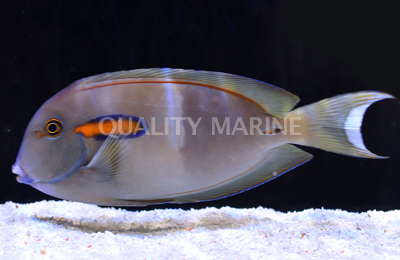
Ocean Surgeonfish and the Doctorfish (A. tractus & A. chirurgus)
In Latin, chirurgus translates as doctor or surgeon, giving this fish its common and scientific names. This alludes to the cleaning behaviour of this fishs juveniles, which forms stations frequented by sea turtles. Both of these Acanthurus are restricted to the Atlantic. The Doctorfish is primarily grey, with bluish fins and a series of distinctive vertical bars on the lower half of the abdomen. The Ocean Surgeonfish lacks these bars and comes in a light grey or brown hue. Its most distinctive quality is a bright blue streak across its face. In recent years, the name A. bahianus has been used for a similar fish restricted to the Southeastern Atlantic, while the closely related A. monroviae can be seen on the other side of the ocean, all over the West African coastline. Like most West African species, it is rarely seen in aquariums
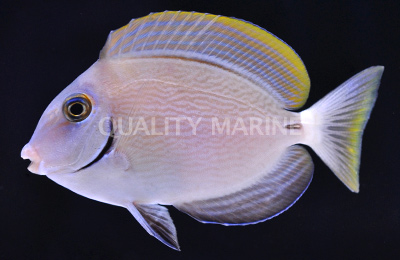
Orange-socket, Whitelip, and the Blackstreak Surgeonfish (A. auranticavus, A. leucocheilus, A. nigricauda)
These three species are relatively uncommon, both in the wild and in aquariums. All three are relatively dark fishes with a bright blue margin to the unpaired fins. They also tend to share some minor similarities in their facial patterning, with light and dark bands around the throat of A. leucocheilus and A. auranticavus. Both A. nigricauda and A. leucocheilus have a thin yellow band in the pectoral fins (fully dark in A. auranticavus). The easiest to identify of this lot is the Blackstreak Surgeonfish, which has a black streak along caudal spine and a short dash behind the eye. The Whitelip Surgeonfish has white lips, distinctive facial markings and orange tips to the dorsal and anal fins. The rarest of them all is the Orange-socket Surgeonfish, which often (but not always) has orange surrounding the caudal spine. It also has a short dash behind its eye, more abbreviated than the one seen in A. nigricauda. Each is widespread in the Indo-Pacific.
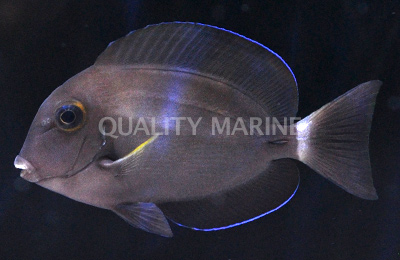
Blackear Surgeonfish and Ringtail Surgeonfish (A. maculiceps & A. blochii)
The Blackear Surgeonfish is a beautiful and highly recognizable species from the Indo-Pacific, though one which is never particularly common. It resembles some of the Ctenochaetus bristletooths in its appearance, having many yellowish spots on the head and prominent striations along the body. The yellow-tipped pectoral fins are a dapper touch, and a short yellow and black marking sits behind the eye. The Ringtail Surgeonfish is an often misidentified species and relatively common across the Indo-Pacific. It is mostly tan colored, with bluish fins. The striations of the body are broken into fine spots, the pectoral fins are entirely dark, the face and breast are covered in linear blue striations, and a short yellow ear sits behind the eye. Another similar species, the Finelines Surgeonfish (A. grammoptilus), can be told apart for having a yellow tipped pectoral fin and striations (rather than spots) along the body. It is best known from inshore reefs of Australia, but is rarely, if ever, collected for the aquarium trade.
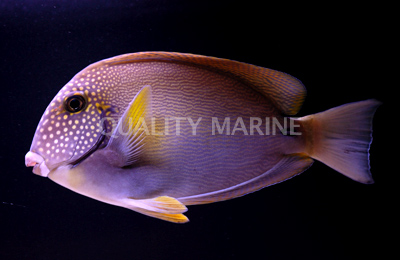
Dussumiers and Black Spot Surgeonfish (A. dussumieri and A. bariene)
These two are among the most colorful in the group, and also some of the largest. The facial markings of Dussumiers Surgeonfish are highly similar to those seen in A. blochii, but the dorsal and anal fins are bright yellow, the caudal fin is blue, with black spots and yellow margins, and the pectoral fin has a yellow leading edge. The Black Spot Surgeonfish also has yellow fins and a somewhat similar (but unspotted) caudal fin. Its namesake black spot is behind the ear, and the white lips and orange pectoral bar make this one quite unmistakable.
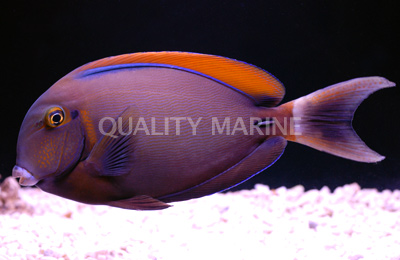
Fowlers Surgeonfish (A. fowleri)
Theres no mistaking this fish and its unique horseshoe marking behind the eye. In other respects, it is quite similar to species like A. dussumieri and A. bariene. However, unlike those two, which both have broad distributions in the Indo-Pacific, Fowlers Surgeonfish is known only from the Coral Triangle, and only rarely so. This is a true holy grail for acanthurid fans.

Yellowfin and Pale Surgeonfish (A. xanthopterus and A. mata)
These are two of the largest species in this group, both capable of reaching nearly two feet in length. They are also both frequently mistaken for one another, though, with a bit of practice, they are easily told apart. The Yellowfin Surgeonfish has bright yellow pectoral fins, unlike anything else in the genus, along with dorsal and anal fins that feature a series of thin yellow stripes. It is common and ecologically dominant in the wild, and replaced by the darker A. gahhm in the Red Sea. The Pale Surgeonfish is fairly common as well, but its diet is fundamentally different. This is reflected in this species more elongated shape and the terminal position of the mouth, which allows for a quicker fish thats better able to see its prey minute salps and jellies floating in the water. While it might behave differently from the fishes weve just covered, its morphology and genetics suggest that this shift in feeding ecology happened from within this detritivorous group. To identify A. mata, just look for the yellow upper lip, the dark pectoral fins, the bright yellow dorsal and anal fins, and the heavy linear striations all along the body.
